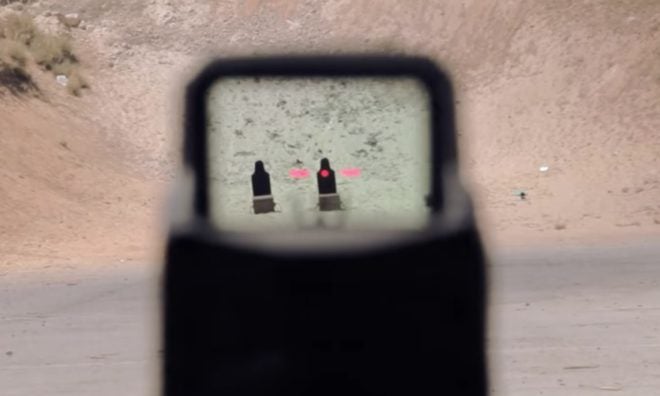We’ve had a few articles discussing the much coveted MH1 Reflex sight from Hartman Ltd. I just spent a few days in a training class, ran by Lt Col Mickey Hartman himself, where the sights were an integral part of the curriculum.
One of the benefits of not only using the MH1, but getting time with the creator, is that I was able to get some insight into the “why” question for a number of features. This optic was well thought out and the main compromise (the height and weight) is well worth the benefit (near parallax free on the huge field of view).
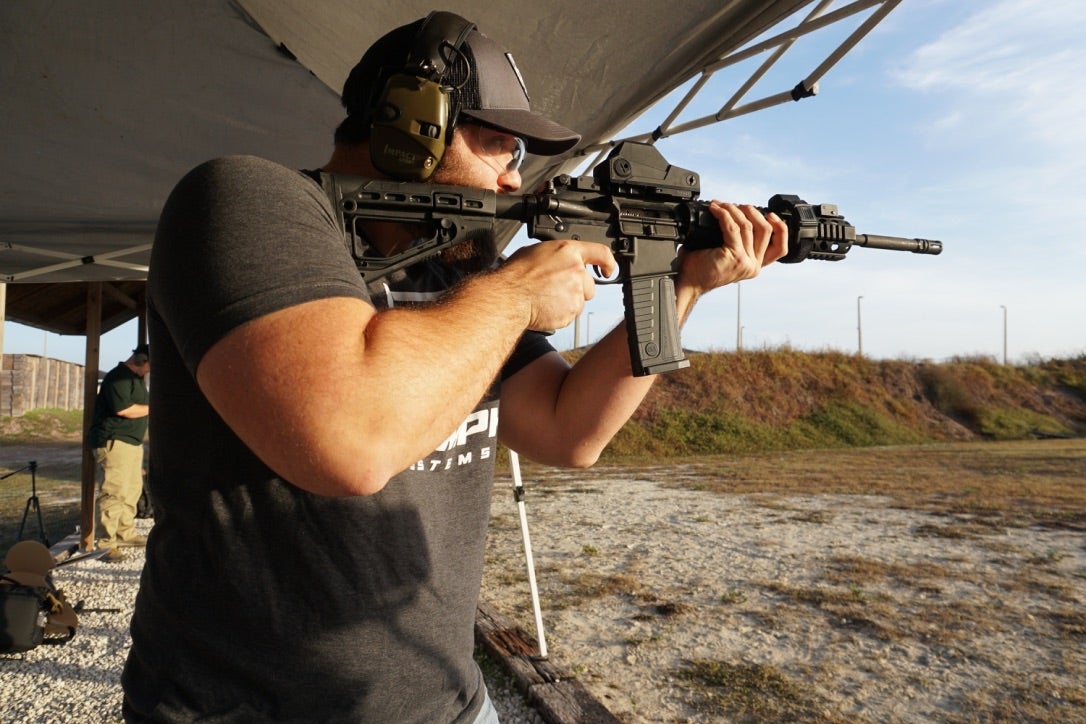
Works well on a rifle
Make no mistake, this is not a race sight–this is a battle sight. The features were developed to solve a number of challenges that were discovered in the crucible of a nearly non-stop combat environment for over 50 years. Don’t expect to see this sight at many 3-Gun competitions…
Construction and Design
There are twelve features and functions that differentiate the Hartman MH1 from the competition:
- Largest Field of View
- USB Rechargeable Internal and Replaceable CR123
- Sleep Mode
- Memory
- Ranging and Balancing Reticle
- Rear Control Panel Design
- Low Battery Indicator
- 5 Brightness modes/5 Night Vision Modes
- All Settings User Configurable
- Infrared Remote Control
- Compatible with BUIS
- Near Parallax Free
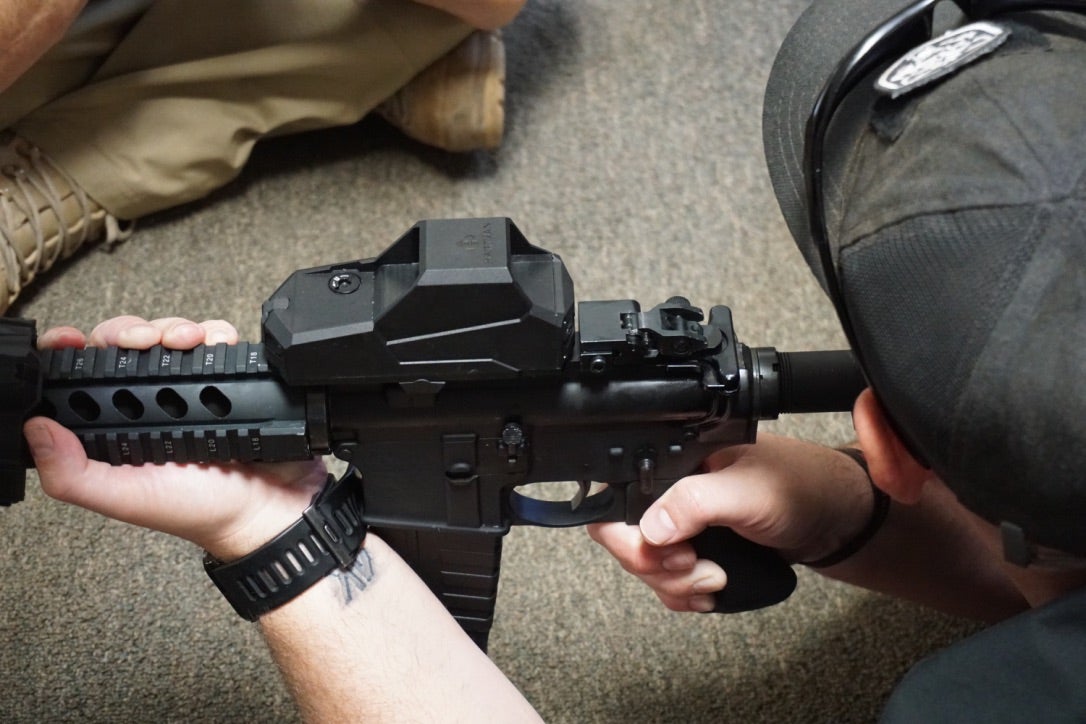
It is definitely super rugged. I’m going to be interested in it’s long term durability.
The MH1 has the largest field of view of any reflex sight currently available. The field of view was specifically enhanced to be better for longer ranges, shooting at smaller targets, and for use with night vision (which is a huge issue for a number of sights due to the reduced field of view you get from most NODs). It is also built with real glass (opposed to polymer) which is one of the things that increases the weight.
The power system is pretty interesting. First you can recharge the MH1’s primary battery (which is not user replaceable) using a standard USB-micro cable. Just like the one you use for your phone, from any source that is USB compatible (power brick, car outlet, solar battery pack, etc). The power system is intelligent. It will use the rechargeable battery first, then fail over to the CR123. If only one battery has a charge it automatically picks that one. This also factors into the low battery indicator. It only triggers on low power in the system–not either battery specifically. The CR123 was chosen because of life and consistency of power, but at the expense of more weight (opposed to a disc battery). Additionally the CR123 is installed perpendicular to the barrel, to eliminate the potential for it becoming dislodged from recoil (which may, ahem, have been an issue for some other sights).
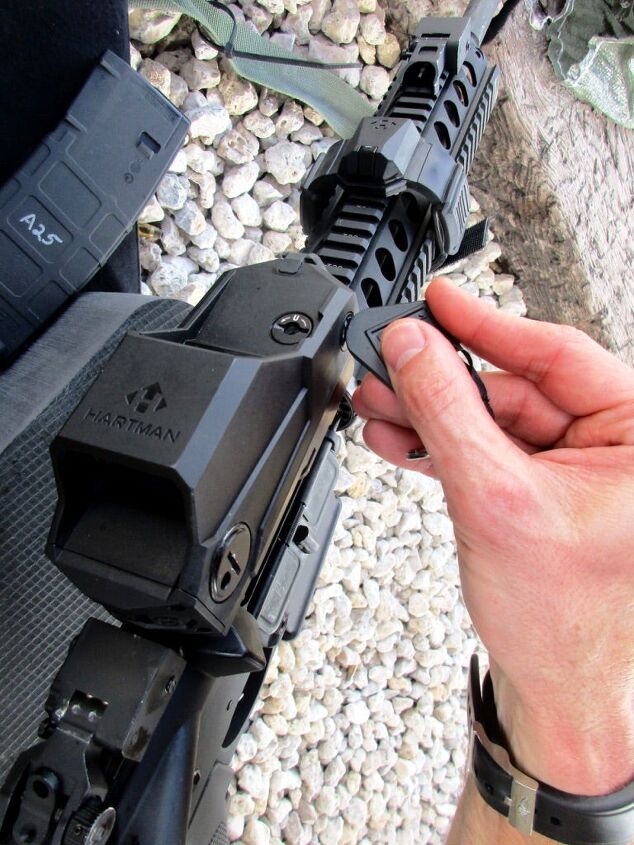
Adjusting the MH1. Note the remote forward mounted on the hand guard.
To better extend battery life the MH1 also has an intelligent sleep mode that utilizes dual motion sensors that are exceptionally sensitive. Basically the sight will only come on when the weapon is indexed, and it detects this by a roughly 20% change in orientation from horizontal (this can be disabled for high angle shooting). It will not go into sleep mode as long as the weapon is indexed–even if you are super still, it still detects the micro movements and stays awake. When it has gone to sleep, and it is woken back up, it remembers your last settings, no matter how much time has passed (I would assume a decade may be a bit much). The MH1, by default, will alert you at 2 hours out when the battery gets low by flashing the reticle. The flashing becomes more aggressive the closer you get to full drain.
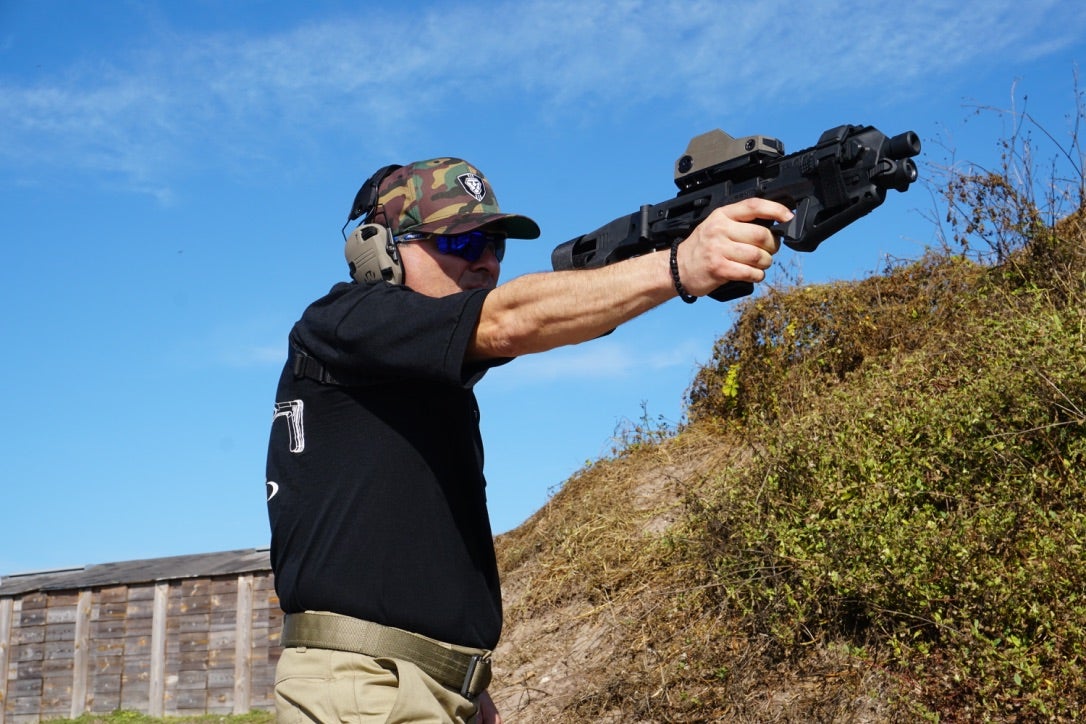
It makes one handed pistol (er, micro RONI with stabilizer) shooting easier. Anyone up for making a slide cut out? 🙂
Red dots are not the most optimal for engaging targets at any sort of range. Basically a dot has no “horizon” to indicate when the weapon is level. Not a big deal for CQB distances, but can translate out to misses if the weapon is angled and you are shooting at a few hundred yards. So how is that mitigated? By adding a horizon bar to the right an left of the center dot. And if you are going to add them, why not build in a range estimator.The space between the two bars (with the dot in the middle) is shoulder width at 50 yards, the bar itself is the width of a standard human’s shoulders at 100 yards, and the dot is head width at 300 yards. One of the other problems with reflex sights is they present the “enemy” side with a light source (the closer the light source is in line with the viewport the worse the problem). The MH1 completely eliminates this problem (even with observation from the front via NVDs) by placing the light in a totally different plane, and using a full size prism and mirror to reflect the reticle. This was the compromise that led to the tall profile. This design is also what gives the MH1 it’s near parallax free view (please feel free to discuss your opinion of parallax and reflex sights in the comments).
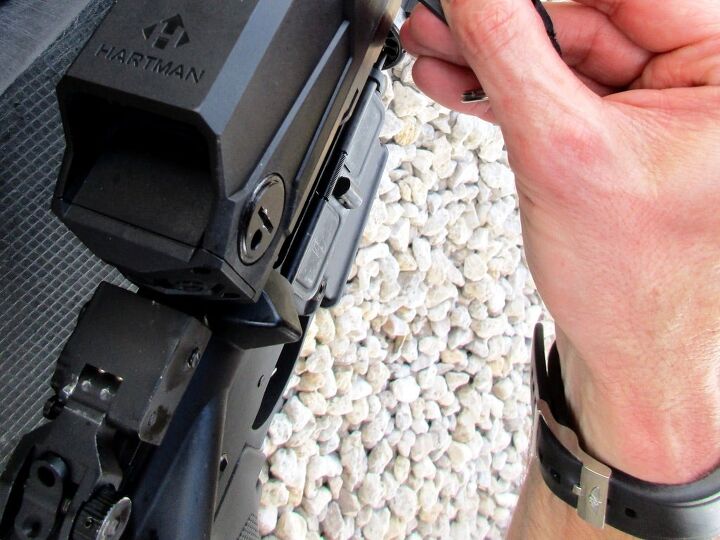
Note the slight angle of the rear control panel. It is just enough to allow access with a rear mounted magnifer.
The control panel is angled and the power button is on both sides to accommodate the use of NVDs and magnifiers which would traditionally block access to a rear panel. The buttons also control the brightness level, 5 for day use and 5 for NVD use.
The two other really “standout” features are the remote and the user configuration software (the software is an additional charge). The remote is a strapped contraption that you mount to the top of your weapon, in line with the MH1. It communicates with the sight via a super short range infrared beam (that is a totally different wavelength than the ones used by NVDs; and doesn’t have a cable to get snagged on things). The remote allows you to turn the sight on, and adjust brightness. It doesn’t allow you to accidentally turn it off by not having an off function. It uses a CR2032 disc battery.
Finally, you can program the sight with the optional software, and you can literally change everything from intensity of the brightness settings to the low power indicator timeout, as well as enable and disable features. Super flexible.
And for those that care, the Hartman MH1 is MIL-STD-810G.
Observations
After running the Hartman MH1 in class for several days, I can attest that the features work and work well (with a couple of exceptions). We had one mounted on a Micro RONI Stab and one mounted on an AR-15.
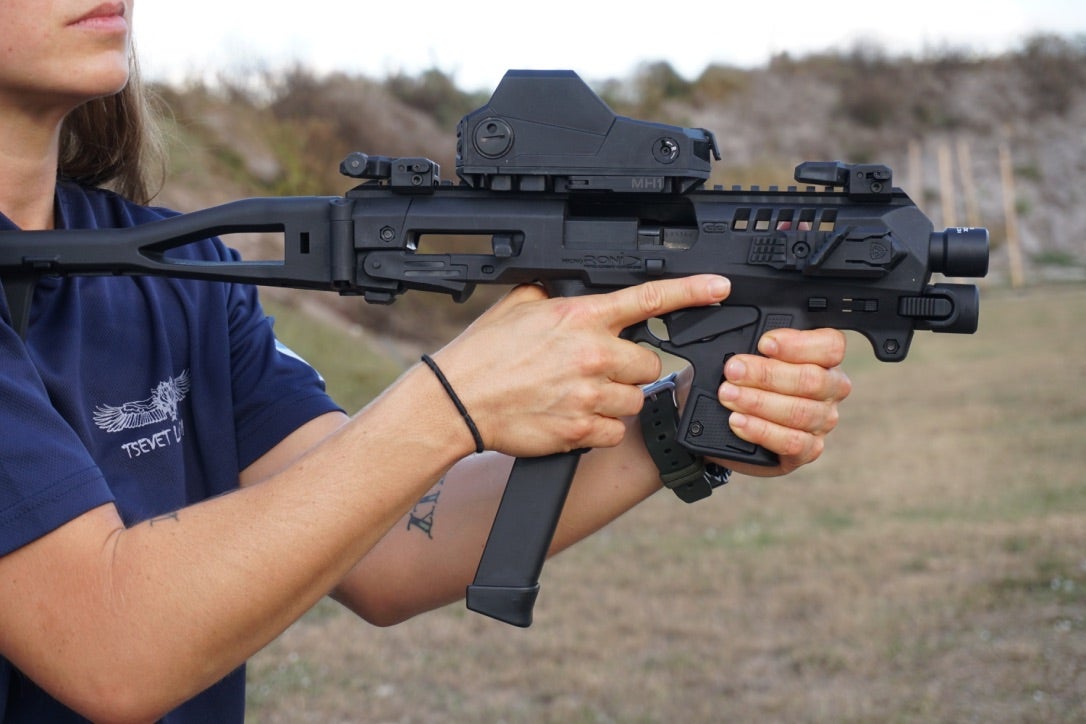
Hartman MH1 mounted on a micro RONI. Note the height.
It is very tall, if such things matter to you. I initially thought it may be too high, but within an hour of using it, it was no different than any other sight I’ve used–you just adapt to it.
The exceptions are the software and the remote. We didn’t get to use the software–there was just not really time in the schedule. The remote I found a little annoying at times as it was in the way. This is really a nit picky sort of thing. Since we were sharing the platforms among a few people we didn’t have much option to configure the rifles personally. When I eventually get one, I will be able to mount it where it makes sense for me.
Also it is important to note, while we abused them pretty good in the class, we did not have the ability to do durability testing on them. I’d like to see how they hold up in comparison to, say, an Aimpoint. And since they have not been in existence for very long at all, we don’t have any operational data on the battery life–can they eek out 5 years?
A great video discussing some of what I talked about as well as showing it in use:
Conclusion
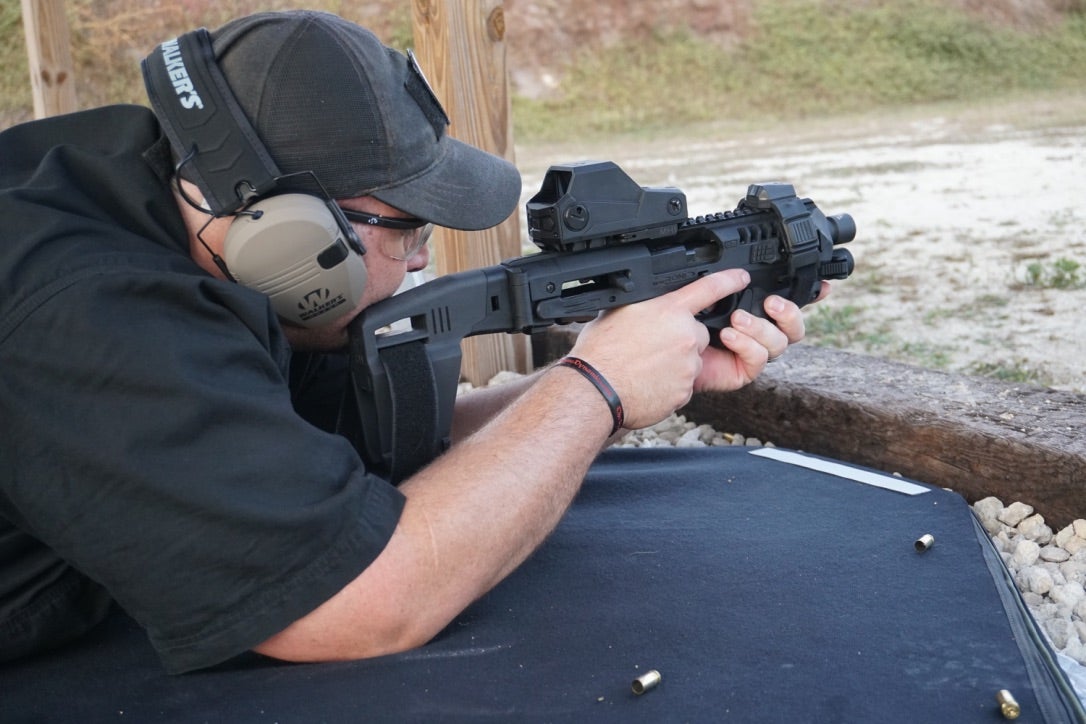
No, I’m not shouldering it… 🙂
I will definitely be adding one (maybe a couple) of these to my toy box as soon as they are generally available to the public. I totally understand and agree with the design and features the MH1 has. The biggest unknown to me is the long term durability and battery life–the sight is just too new to have that data–and we all know that the lab results are not necessarily the same as real world.
They are being sold as fast as they are produced, with production running twenty-four hours a day, six days a week. You can find some waiting lists to join at places like Optics Planet, but don’t expect one any time soon. MSRP is ~$650, and you can learn more at:
If you are going to be at SHOT, you can see them in person at booth #12571.
Pictures courtesy of Kevin “TacDaddy” Reichman.
 Your Privacy Choices
Your Privacy Choices
